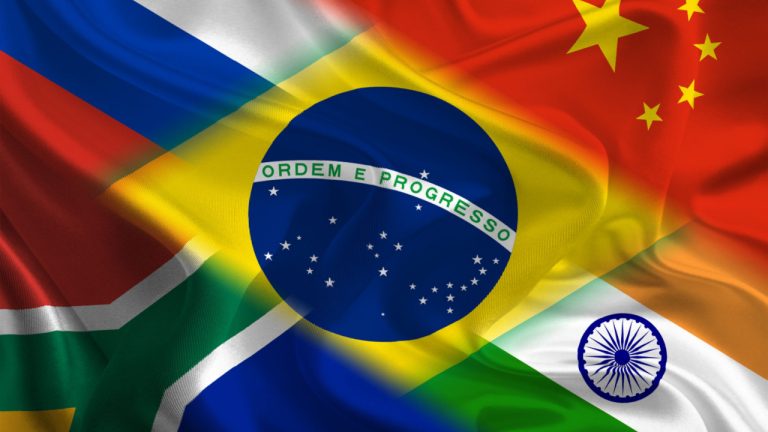Dutch ING Bank Analysts: BRICS Expansion to Power De-Dollarization Across World Economies
Publikováno: 22.8.2023
 Analysts of ING bank believe the de-dollarization trend that has been growing in the world might pick up momentum due to the possible expansion of the BRICS bloc. While the issuance of a BRICS common currency remains uncertain, according to some developing narratives, the Chinese yuan could become the de facto substitute for the U.S. […]
Analysts of ING bank believe the de-dollarization trend that has been growing in the world might pick up momentum due to the possible expansion of the BRICS bloc. While the issuance of a BRICS common currency remains uncertain, according to some developing narratives, the Chinese yuan could become the de facto substitute for the U.S. […]

Analysts of ING bank believe the de-dollarization trend that has been growing in the world might pick up momentum due to the possible expansion of the BRICS bloc. While the issuance of a BRICS common currency remains uncertain, according to some developing narratives, the Chinese yuan could become the de facto substitute for the U.S. dollar.
ING Bank Analysis: De-Dollarization to Gain Traction
A recent note issued by ING Bank revealed that the de-dollarization movement that BRICS countries have started is likely to continue to pick up steam. The catalyst for this probable growth will supposedly be the BRICS summit that will be held in Johannesburg this week, where the bloc integrated by Brazil, Russia, India, China, and South Africa will be considering adding more countries.
ING Bank analysts Chris Turner, Dmitry Dolgin, and James Wilson discussed this in a note last week, stating:
We suspect the subject of ‘de-dollarization’ might gain some traction this summer when senior leaders of the BRICS nations meet.
Several countries are seeking to be part of the BRICS group, from powerhouses like Saudi Arabia to countries facing economic hardships like Argentina and Venezuela. However, there is still no framework for adding new members, even though Brazilian President Luiz Inacio Lula da Silva has vowed that these topics will be discussed during the summit.
Chinese Yuan Set to Antagonize the U.S. Dollar
While there have been talks on issuing a BRICS bloc common currency, officials have offered contradictory statements. Nonetheless, the China-led bloc could rely on the Chinese yuan as part of its current de-dollarization strategy, as it has gained momentum in bilateral trade agreements between countries of the bloc, according to ING analysts.
For example, Brazil and Russia are already using the Chinese yuan to complete settlements to pay for various imports from China, and also Indian refiners have paid for Russian oil imports in Chinese yuan.
On this, ING analysts stated:
De-dollarization is seen mainly in the central banks’ international reserves, as the dollar is being pushed out by a variety of currencies, including the yuan. Looking at the long-term developments, the USD seems to be replaced mostly by Asian currencies, namely the CNY and Japanese yen.
However, the note explains that the Chinese yuan lacks attractiveness for bond investors due to “a relative lack of liquidity and lingering investor concerns over potential capital controls.”
What do you think about the expansion of the BRICS bloc and its effect on the de-dollarization processes developing? Tell us in the comments section below.